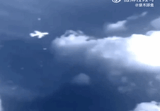Anonymous
9/2/2025, 12:57:07 PM
No.41012998
>>41013030
>>41013897
>>41014870
>>41017813
>>41018506
>>41018876
>>41019375
>>41023269
>>41023344
>>41024348
>>41024622
>>41025382
Non-human intelligences
When we talk about evidence for non-human intelligences, it helps to rank claims from least to most credible:
Weakest are folkloric and anecdotal accounts — myths of “sky people,” abduction narratives, or supposed out-of-place artifacts. They’re culturally interesting but prone to hoaxes, misperceptions, or psychological explanation.
Middle tier are astrophysical anomalies. “Oumuamua” accelerated in ways hard to explain, though natural hypotheses exist. The 1977 “Wow!” Signal and certain Fast Radio Bursts sparked speculation, but remain one-off or likely natural. Tabby’s Star once looked like a Dyson sphere candidate, but dust fits better. These remind us the universe holds mysteries, though “aliens” aren’t the default explanation.
Stronger are reported physical traces and physiological effects, like claims of exotic alloys or the “Oz effect” during close encounters. Intriguing, but not yet scientifically verified.
Strongest evidence comes from multi-sensor, multi-observer military encounters: the 2004 Nimitz “Tic Tac,” 2015 Gimbal, and others. Pilots, radar, infrared, and visual confirmation all line up, showing craft with extraordinary flight profiles that defy current human technology. Importantly, these aren’t fringe claims — the U.S. Department of Defense and NASA openly admit that some UAP remain unidentified after rigorous analysis.
In short: the best evidence is not ancient myths or speculation, but instrument-verified data collected by trained observers and acknowledged by official institutions. That doesn’t prove “aliens” — but it does establish that we are confronting a genuine unknown, one that deserves serious study.
Weakest are folkloric and anecdotal accounts — myths of “sky people,” abduction narratives, or supposed out-of-place artifacts. They’re culturally interesting but prone to hoaxes, misperceptions, or psychological explanation.
Middle tier are astrophysical anomalies. “Oumuamua” accelerated in ways hard to explain, though natural hypotheses exist. The 1977 “Wow!” Signal and certain Fast Radio Bursts sparked speculation, but remain one-off or likely natural. Tabby’s Star once looked like a Dyson sphere candidate, but dust fits better. These remind us the universe holds mysteries, though “aliens” aren’t the default explanation.
Stronger are reported physical traces and physiological effects, like claims of exotic alloys or the “Oz effect” during close encounters. Intriguing, but not yet scientifically verified.
Strongest evidence comes from multi-sensor, multi-observer military encounters: the 2004 Nimitz “Tic Tac,” 2015 Gimbal, and others. Pilots, radar, infrared, and visual confirmation all line up, showing craft with extraordinary flight profiles that defy current human technology. Importantly, these aren’t fringe claims — the U.S. Department of Defense and NASA openly admit that some UAP remain unidentified after rigorous analysis.
In short: the best evidence is not ancient myths or speculation, but instrument-verified data collected by trained observers and acknowledged by official institutions. That doesn’t prove “aliens” — but it does establish that we are confronting a genuine unknown, one that deserves serious study.



